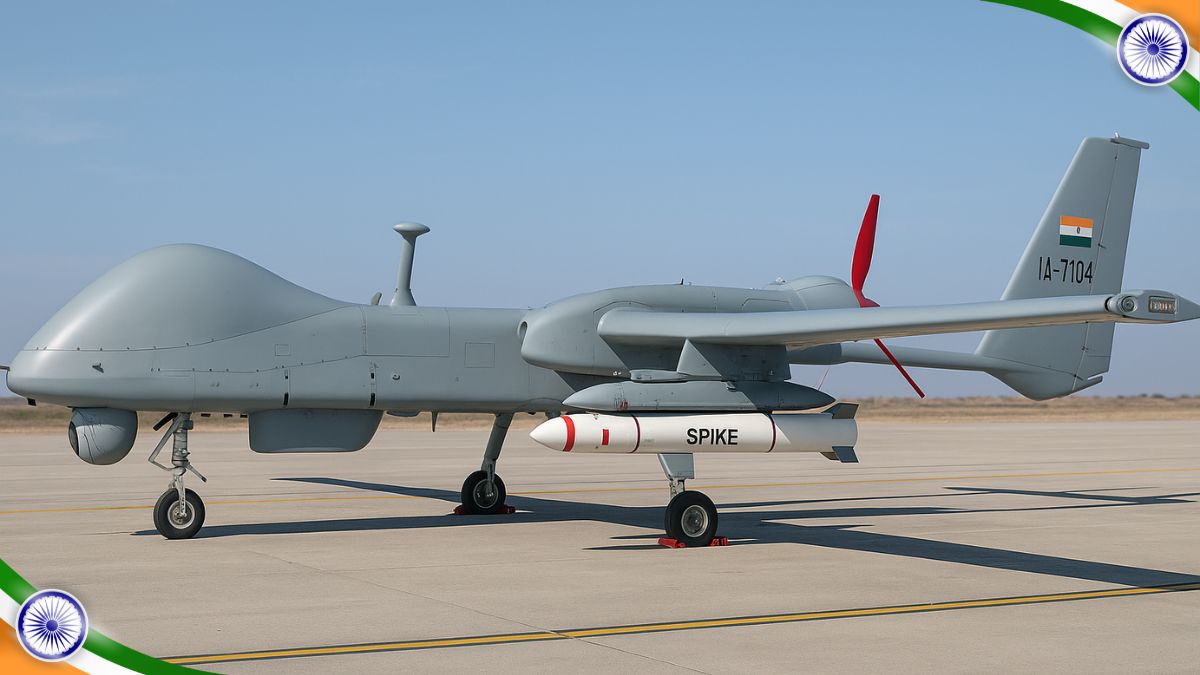India To Acquire More Heron Drones, Plans To Arm Them With Spike Missiles

India plans to arm its Heron drones with Spike missiles, transforming them from surveillance platforms into powerful tools of precision warfare after Operation Sindoor. Image courtesy AI generated picture via DALL-E
The Indian Armed Forces are set to acquire additional Israeli-origin Heron drones following their proven effectiveness during Operation Sindoor, defence officials have said. Plans are also underway to arm the unmanned aerial vehicles (UAVs) with air-launched Spike anti-tank guided missiles, significantly boosting their strike capabilities.
Currently, the Indian Army, Navy, and Air Force all operate Heron drones from their respective bases, while intelligence agencies deploy them for specialised missions. Traditionally used for intelligence, surveillance, and reconnaissance (ISR), Herons played a crucial role during Operation Sindoor against Pakistan in May 2025.
One service branch is actively working on integrating the Spike-NLOS (Non-Line-of-Sight) missile with Heron drones, according to defence officials. This upgrade would allow India to conduct precision strikes on enemy targets deep inside hostile territory, expanding the UAVs’ role from surveillance to combat.
The Heron fleet has been a key asset in border surveillance with China and Pakistan, consistently delivering high endurance and long-range performance.
Operation Sindoor was launched in retaliation for the Pahalgam terror attack, which killed 26 civilians. India’s strikes destroyed over nine terror camps of Jaish-e-Mohammed (JeM) and Lashkar-e-Taiba (LeT) in Pakistan and Pakistan-occupied Kashmir, eliminating more than 100 terrorists.
In response, Pakistan attempted strikes on Indian military bases between May 8 and 10, prompting India to retaliate with missiles and drones. After four days of intense hostilities, both sides agreed to de-escalate on May 10.
The Herons’ performance has now cemented their place as frontline assets in India’s evolving defence strategy.







